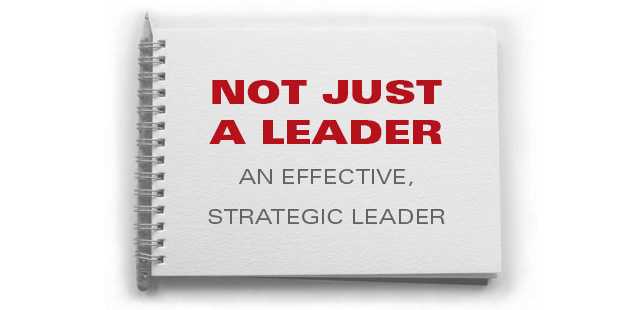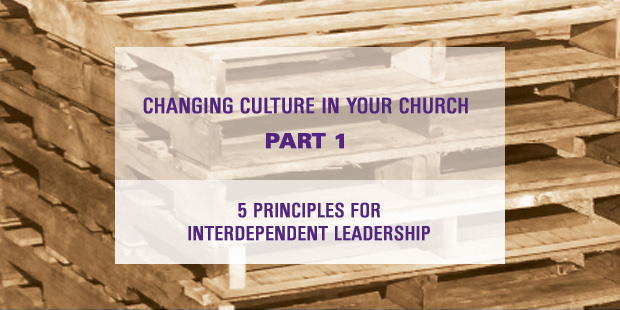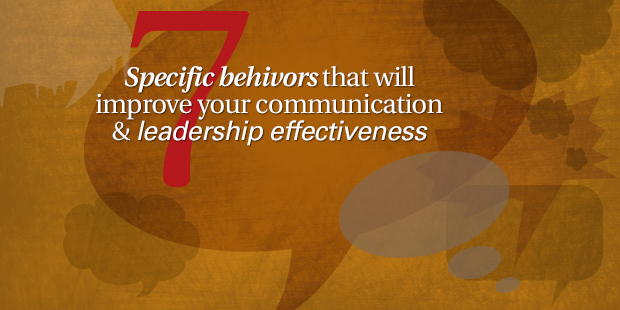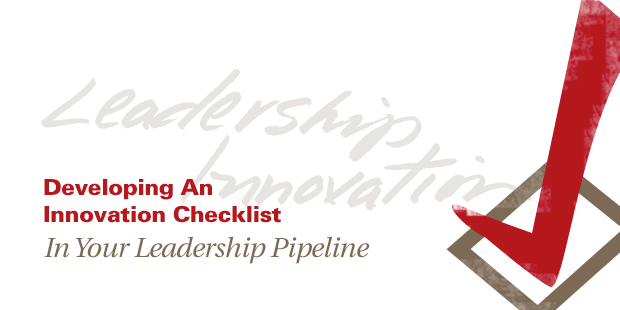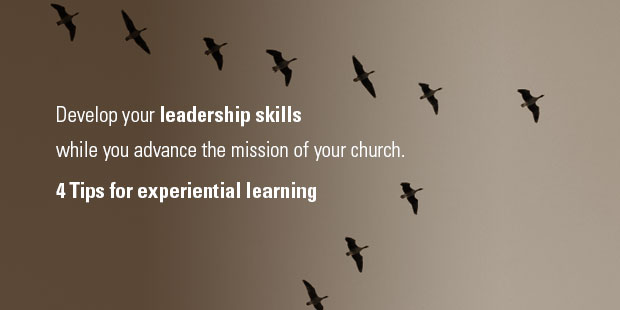
Develop Your Leadership Skills While You Advance the Mission of Your Church – 4 Tips for Experiential Learning
Want to learn what it takes to lead and develop a team? Or steer change? Persuade your peers? Manage a problem employee?
“Then do it,” says CCL’s Cindy McCauley. “You will broaden and deepen your leadership capabilities as you do leadership work.”
Learning from experience is the No. 1 way that leader development happens, according to McCauley.
McCauley is a senior fellow with the Center for Creative Leadership. Much of her work focuses on learning: boosting our ability to learn, identifying what is important to learn, and what experiences teach which lessons. She is coeditor of the new book, Experience-Driven Leader Development: Models, Tools, Best Practices, and Advice for On-the-Job Development (Wiley, 2013).
Research in the field of leadership development supports the value of experience-driven leadership. Most executives cite on-the-job experiences as the key events that shaped them as leaders and taught them important skills, behaviors or mindsets. And the formula 70-20-10 is well-known in HR circles: 70 percent of development happens on the job, 20 percent from relationships, and 10 percent in formal or classroom training.
Even so, most of us aren’t given the information or tools to help us maximize or seek out learning opportunities. On-the-job learning is often hit-or-miss. If you want to boost your development, there are many experience-based strategies you can take. According to McCauley, one of the best things you can do is to embrace the idea of development in place.
Development in place is defined as “adding challenges to current work and non-work pursuits in ways that broaden your portfolio of leadership experiences.” While promotions and big job changes are powerful opportunities for learning and growth, you don’t want to wait around for those moments, says McCauley.
You can learn important, new skills by doing work that gives you practice. For example, you can learn to handle external pressure by taking calls on a customer hotline; gain experience handling high-stakes work by doing a tight-deadline assignment for your boss; or tackle unfamiliar challenges by asking your boss to delegate one of his or her responsibilities to you. Together, these experiences help prepare you for future roles or jobs.
So, how do you do it?
>> First, identify the kinds of experiences you need to add to your leadership portfolio. Consider these 10 leadership challenges — which experiences would be new or a chance to stretch in ways you haven’t in a while?
- Unfamiliar Responsibilities: Handling responsibilities that are new or very different from previous ones you’ve handled.
- New Directions: Starting something new or making strategic changes.
- Inherited Problems: Fixing problems created by someone else or existing before you took the assignment.
- Problems with Employees: Dealing with employees who lack adequate experience, are not highly competent or are resistant to change.
- High Stakes: Managing work with tight deadlines, pressure from above, high visibility and responsibility for critical decisions.
- Scope and Scale: Managing work that is broad in scope (involving multiple functions, groups, locations, products or services) or large in sheer size (for example, workload, number of responsibilities).
- External Pressure: Managing the interface with important groups outside the organization, such as customers, vendors, partners, unions and regulatory agencies.
- Influencing without Authority: Influencing peers, higher management or other key people over whom you have no authority.
- Work across Cultures: Working with people from different cultures or with institutions in other countries.
- Work Group Diversity: Being responsible for the work of people of both genders and different racial and ethnic backgrounds.
>> Second, think of ways you can add an important challenge while continuing in your current job.Pick two or three challenges you are seeking and start generating specific ideas about how to pursue them. Could you:
- Reshape your job? Add new responsibilities to your job on a more or less permanent basis. These could be responsibilities moved from your boss to you (or exchanged among peers). Or they may be responsibilities that no one currently owns in your group or organization.
- Take on a temporary assignment? Seek out tasks or responsibilities that are bounded by time: projects, task forces, one-time events or assignments that can be rotated among team members.
- Seek challenges outside the workplace? Take on leadership responsibilities in community, nonprofit, religious, social or professional organizations.
>> Third, focus and create a plan. Narrow your options and pick one developmental assignment to undertake. Talk to your boss and other stakeholders: What’s practical? What’s doable? What would be most beneficial to your organization? What would be most motivating to you?
Then, so you are sure you learn what you set out to learn, make a plan. Map out:
- The ways in which the assignment can help you grow as a leader.
- The skills, behaviors and actions you’ll need to practice.
- Support mechanisms — what will you need and who can provide it.
- Strategies that will help you focus on learning from the assignment (for example, keeping a journal or checking in with an accountability partner).
>> Finally, don’t give up. Learning to lead isn’t easy. Being competent and comfortable in new situations and using new skills takes time. But experience-driven learning pays off. You’ll benefit from interesting experiences in the short-term and build a portfolio of skills that will make you a more effective leader in the future.
Read more from CCL here.

Tags: Center for Creative Leadership, Development in Place, Leadership Development












